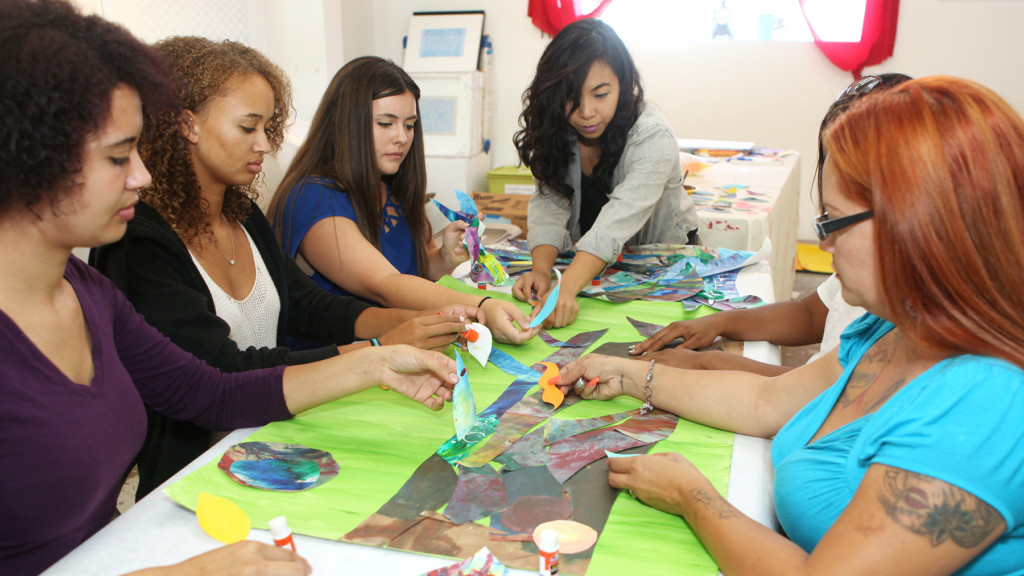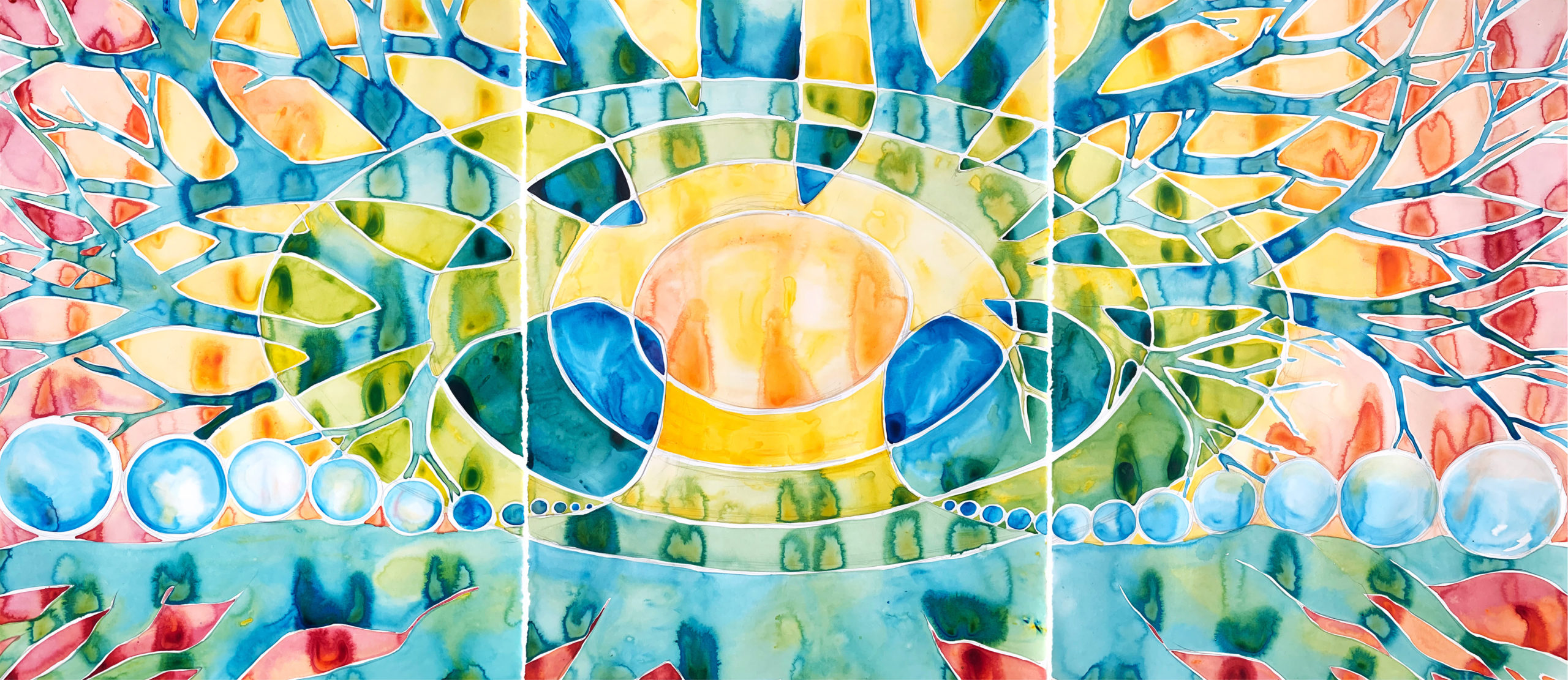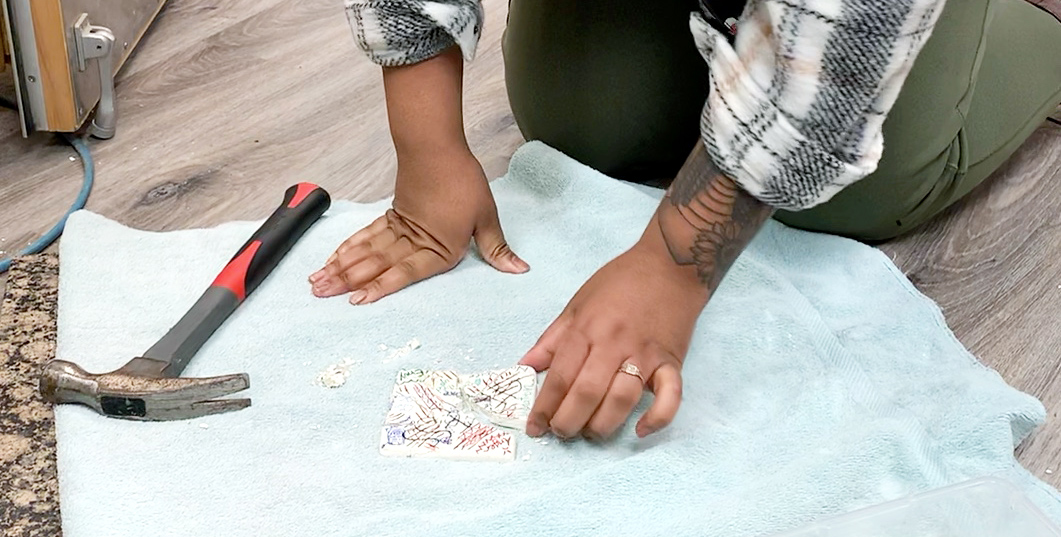I am a journalist. It’s a professional identity I’ve struggled with for years because it never seemed to fit. It’s traditionally a somewhat isolating role that encourages you to detach and be analytical while inspiring compassion or outrage in others. You get to be around a lot of feelings without ever having to talk about or process your own.
Working with AWBW helped me create an enduring tool for thinking about mental health and taught me new ways to build community.
Though I’ve spent countless hours listening to people talk about their lives and offering a platform for them to share their stories, it was still a space where I held the power and I did the crafting. It felt important but uncomfortable.
When embarking on my newest journalism endeavor, Mental Health Mosaics, I wanted that to be different. The project focuses on topics identified by a community advisory board of people with lived experience related to mental health. I intentionally partnered with Out North, a social-justice-focused community arts organization, instead of with a newsroom to develop Mosaics because they knew how to use the arts to communicate in ways that I couldn’t imagine.

Photos by Julia Roberts, Anchorage Habitat for Humanity
But it’s not enough to partner or to seek guidance to truly do things differently. I also needed to change my own mindset about how to learn from others and to explore hard topics, like mental health. Knowing abstractly that art can help people deal with hard emotions is very different from experiencing it. And as a person who is afraid to try to create art because I feel like I’m wasting valuable materials, experimenting with creative processes is hard. That’s why an old friend and AWBW facilitator suggested I seek training from AWBW.
Working with AWBW as a Social Justice Fellow completely shifted certain aspects of Mental Health Mosaics. The program taught me how even simple exercises with nothing but a pen can help you reframe how you explore aspects of yourself or the world around you. With that in mind, I worked with AWBW staff and community members to create a workbook of prompts, poetry, and coloring pages to help people think differently about mental health. As one mental health peer navigator put it, the workbook “talks about mental health without all of the psychobabble.”
I’ve distributed the workbooks at events around Alaska and mental health providers told me they are printing the free PDF version for their clients and using them in groups. Other individuals are working their way through it independently. The workbook is a guide and tool for processing ideas about mental health. It’s a way to help people think of mental health as something beyond a therapy session. It’s part of everyday life.
I invite you to use the workbook on its own or in conjunction with the Mental Health Mosaics podcast, a limited series of audio episodes that dive deep into the same mental health issues as the workbook. It primarily focuses on interviews of people with lived experience. (Subscribe on any podcast app and rate it to help others find it!)
AWBW’s ethos that anyone can create art and anything can be art also inspired a partnership between Mental Health Mosaics and the Habitat for Humanity ReStore. Using donated supplies, we hosted drop-in sessions around the community to create mosaics about mental health. More than 150 people used markers and paint to design tiles.

On some, people wrote or drew about things that support their mental health. Often these tiles had pictures of nature or references to family. Those tiles stayed whole.
On other tiles, they wrote and drew about things that were holding them back, like addictions, anxiety, and financial strains, then they smashed those tiles. People described the experience as cathartic, releasing, and empowering. One participant who had been sex trafficked wrote her abuser’s name on a tile, smashed it into bits, then threw it into the trash for a symbolic release.
During the drop in sessions, I spent hours listening to people share what was important to them and talk about their own paths for healing. It was community building through a small, simple act.
Volunteers used whole tiles and the bits and pieces to create mosaics. It was important to use the broken pieces because those are still part of us, even as we heal. The finished mosaics were on display for Mental Health Awareness Month in May and are now on the walls of community organizations across Anchorage.
Working with AWBW added transformative and interactive dimensions to Mental Health Mosaics, helped me create an enduring tool for thinking about mental health, and taught me new ways to build community. I am forever grateful.
Anne Hillman
Windows Facilitator & Social Justice Fellow
Out North
Anchorage, Alaska
Use this workbook to support your mental health.
Download Workbook
Want to utilize art to support mental wellness for communities?
Attend a Training
A Window Between Worlds (AWBW) supports hundreds of direct service organizations across the country to incorporate creative expression into their work with trauma survivors. With this blog we uplift the voices of our art workshop facilitators and participants. We invite you to take in this perspective, notice what resonates and explore how it may fit into your life.





